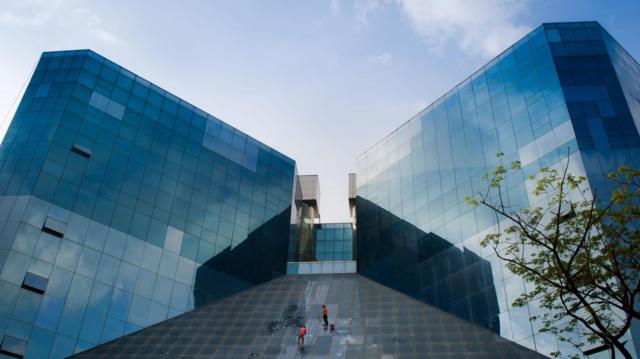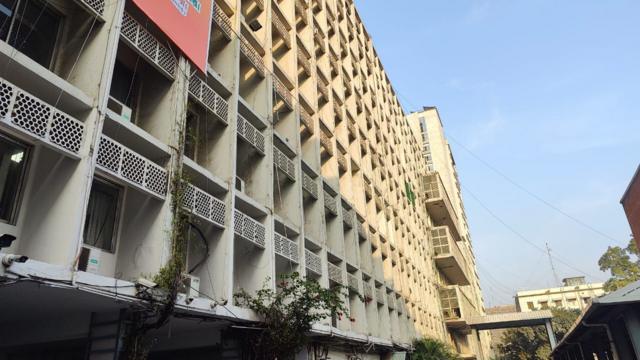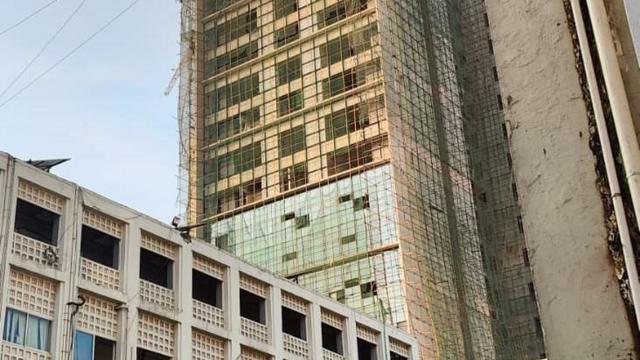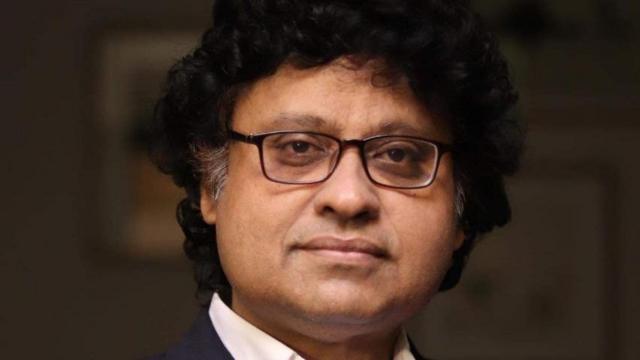The rains at the beginning of this month brought some relief after the continuous heat wave in Bangladesh last April. But once again the temperature rises and the ’causes of warming’ are discussed.
Especially in the capital city of Dhaka, besides the decrease in wetlands and vegetation, the issue of excess of ‘glass buildings’ is coming up.
Many people say that the heat is increasing due to the increase in the number of unplanned glass buildings in the city.
According to urban planners, increasing air conditioning in modern buildings is one of the reasons for rising temperatures in cities. At the same time, they blame the lack of ‘shading’ system in buildings made of glass for the increase in temperature.

How to start the use of glass in the construction of buildings in Dhaka
Until the 1980s, a common feature of high-rise buildings in Dhaka was the ‘shading system’. In this system, the buildings are constructed in such a way that sunlight does not enter the building directly.
Earlier buildings depended on windows for light and air.
Therefore, to protect the house from the heat of the monsoon rain or the summer sun, the top of the window was made in such a way that direct sunlight or rain does not enter.
This planned use of natural light and air is called ‘passive design strategy’ in architectural parlance.
The trend of using glass in buildings started from the beginning of the nineties. Due to the demand, glass imports increased at that time.
“When a building is made like a box and covered with glass, it easily gives a look and the impression of a developed country, so the demand for it increases,” said Prof. Dr. Khandaker Sabbir Ahmed.
He said that 18-20 inch shading was given earlier during the construction of buildings, but it was not followed in most cases in new buildings.
As a result, the heat inside the building increases with the use of glass. Again, sunlight is reflected and increases the temperature of the surroundings.

‘Temperature is rising due to building structure’
Most of the new buildings being constructed in Dhaka’s commercial areas are fully air-conditioned.
In a large part of these buildings, such glass is used so that the outside air-sound cannot enter inside.
As a result, the use of air conditioners increases to keep buildings cool.
And urban scientists see this air conditioning system as one of the reasons for heat increase.
Architect Iqbal Habib, vice president of Bangladesh Environment Movement (Bapa), said, “Construction of buildings with open and unsuitable glass is increasing the use of air conditioning.”
“Naturally, buildings lose or absorb excess heat without high-tech glazing. As a result, the temperature inside the building rises to an undesired amount,” added Mr. Habib
A study published in 2022 in ‘Energy and Buildings’, an international journal dealing with energy and electricity use and performance in buildings, highlighted the negative effects of mechanical cooling of buildings in temperate regions and emphasized natural ventilation.
It mentions the results of another study conducted on commercial buildings in Tokyo, Japan. This study found that on busy days, exhaust air from air conditioners used in modern commercial buildings increases the temperature of adjacent areas by 1-2 degrees Celsius.
Another study conducted in a residential area in Taipei showed that the air-conditioned surroundings of the buildings increased the temperature due to the warm air emitted from the AC. As a result, the AC is consuming more electricity than usual to cool the buildings, requiring additional AC. This is referred to as a vicious cycle in the study.

Urban planners say that most of the modern glass buildings do not have shading systems, so direct sunlight causes the temperature inside the building to rise above normal. Besides, the light reflected on the glass wall increases the temperature of the surroundings.
Not only that, additional use of air conditioners and additional electricity is required inside the building to reduce the temperature. The hot air emitted from these devices is also having a negative impact on the environment.
Urbanists call it a ‘discriminatory system’, referring to the creation of ‘heat islands’.
Bangladesh Institute of Planners President Prof. Adil Muhammad Khan said, “The energy consumed by an AC can run 25 to 30 fans. Again extra heat is being given out for your own comfort. This is creating energy inequality.”
Do all glass buildings increase the temperature?
“Glass building is one of the reasons that the temperature is rising in Dhaka,” said Mr. eat
However, ‘glass buildings are not bad’ but during construction ‘it depends on the type of glass, how it is used (heat)’ said architect Iqbal Habib.
According to him, the use of air conditioning is increasing due to the construction of buildings with “open and unsuitable glass”. As a result, the temperature increases.
That is, even if the building is constructed with glass, if some special measures are taken, it is prevented from producing excess heat. Such as the ‘shedding’ system.
“When constructing a building with glass, if it is constructed in such a way that the sunlight does not fall directly on the outer glass, it will not generate excess heat. As a result, the heat inside the building will not increase,” said building experts.

But this matter is rarely taken into consideration during the construction of buildings. Instead, the building experts said that due to the lack of shading system, the sunlight is reflected and increases the temperature of the city.
In many places there is no provision to keep the windows open. As a result, one must resort to ‘climate control’.
The planner thinks that this design of the building is not suitable for the climate of Bangladesh. eat
He said, “The temperature rises due to such design in the winter country. And they benefit when the winter subsides. But following them here is backwardness.”
Many people see the construction of air-conditioned buildings as a ‘prestige concern’, Mr. Habib He said, “Many see the trend of constructing buildings relying on climate controlled devices as affordability. Even in government buildings, the use of glass is often seen these days.”
According to him, when it becomes a ‘national philosophy or city-philosophy’, it pushes the city to dire consequences.
What kind of building is suitable for Bangladesh?
Due to the geographical location of Bangladesh, the intensity of sunlight is very high here. As a result, the construction of buildings in the style of western countries or following them is not suitable in many cases.
In a country with a tropical climate there are certain characteristics of heat-tolerant building construction. In this regard, the examples of Bangladesh Agricultural Research Council and a craft factory in Rangpur were cited as ideals. Habib
These buildings have four common themes.
First, it has a mechanism to prevent sunlight from entering directly inside. And this barrier is prevented by ensuring openness.
Second, cross ventilation. In this way, when there is no intense heat during the eight months of the year, light and air can easily travel within the building.
Third, make it more sophisticated by using trees to add greenery to balconies or exteriors of buildings to keep buildings cool.
Finally, consider the direction of building construction. For example, building structures by reducing exposure to the west and increasing exposure to the south, southeast and east.
Because the sun never shines on the north side, while the morning light on the east side and the wind on the south side are comfortable.
In that case, someone keeps a courtyard-like part and makes it sophisticated with trees to absorb the wind, while someone blocks the sunlight with a cornice or blocker and creates a huge surface outside. Others make arrangements so that sunlight does not enter directly, but enters with shadows.
Mr. commented that each architect uses these things differently with his own ‘innovation and creativity’. Habib

‘People in severe heatstroke due to air and noise pollution’
Due to the amount of noise and air pollution in Dhaka at present, many people question the utility of open-air buildings as opposed to air conditioning.
Architect Iqbal Habib calls it a ‘chain effect’.
According to him, one of the major causes of noise pollution is vehicle horns. Air conditioners are being used at the expense of thousands of rupees simply because of not being able to stop honking.
On the one hand, the situation is becoming more difficult for the underprivileged people.
Also, the children’s lifestyle is changing due to the closure of the building.
Mr. Habib said, “I will accept everything just because I feel comfortable blowing the horn? What could it be? Philosophically speaking, there is no action to solve the problem. Because of that, the use of air conditioners is increasing and this heat is being created.”
As a result, people are experiencing severe heatstroke indirectly due to air and noise pollution, he said, “If you pay attention to this chain effect, a lot can be overcome.”

Some more facts:
A fully air-conditioned building requires a large amount of water. And most of the time, the building owners do not buy this water from Wasa and take it from the deep surface through deep tube wells, said Dr. Ahmed.
Also, if there is no shading system in the buildings constructed with such glass, accidents can also occur if the sunlight reflects on the glass and hits the eyes of the car driver.
Overall, the use of unshaded glass in buildings has “multidimensional environmental impacts,” according to the city analyst.
He said, “These things are not happening keeping in mind the weather in our country, our culture, the energy situation of our country or the issues of climate change.”
What is the solution?
None of the existing laws and policies related to building construction in Bangladesh have any clear guidelines on the shading system of glass buildings or the use of air conditioning.
As a result, many are getting away with constructing buildings that are harmful to the environment.
In that case, urbanists are urging a clear urban philosophy or construction philosophy in this regard through ‘Building Construction Regulations’ and ‘Bangladesh National Building Code’.
In the related laws and policies, they are suggesting to keep the minimum distance between buildings and greening rules in addition to keeping the provision of how much air conditioning will be used in a building or what amount of electric load the building can take.
Dr. “At the same time, the issue of financial incentives can also be kept,” added Ahmed.
According to him, when buildings are closed, people tend to turn to air conditioning.
“In that case, if the building has a ‘ventilation system’ for natural air movement, many people can be enthusiastic about this if the government or government institutions give incentives like holding tax rebates or benefits in insurance.”
In this regard, he cited the example of Germany. He said, despite being a cold country, there is an incentive system if shading is used in buildings made of glass.
“Through this building owners or users will be inclined or attentive to the rules. “Or whatever is said, the market regulators will determine the outcome,” said Mr. Ahmed.